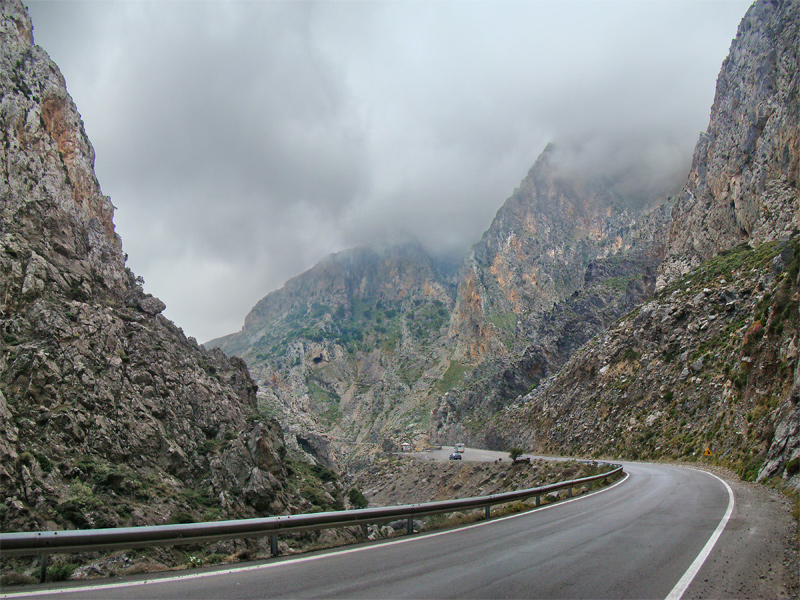|
Kouroupa
Kouroupa ( el, Κουρούπα) is a mountain in western Crete. Its summit is 984 metres above sea level. To the east of the mountain lies Kourtaliotiko Gorge. The summit, its telecoms masts and chapel are accessed by an unsurfaced road up from Atsipades Atsipades (Greek: Ατσιπάδες,) is an archaeological site of a Minoan peak sanctuary in western Crete. It is an open-air peak sanctuary, situated on a mountain and open to the elements. It was discovered by K. Nowicki in 1985. Location At ... village on the northern side of the mountain. On the southern side of the mountain are the villages of Asomatos and Mirthios. Mountains of Crete Landforms of Rethymno (regional unit) {{Crete-geo-stub ... [...More Info...] [...Related Items...] OR: [Wikipedia] [Google] [Baidu] |
Kourtaliotiko Gorge
The Kourtaliotiko Gorge ( el, Κουρταλιώτικο Φαράγγι), also known as the Asomatos Gorge ( el, Φαράγγι Ασώματου), is a gorge on the southern side of the western part of the island of Crete. It is situated where the Kourtaliotiko River flows southwards between the mountains of Kouroupa and Xiron. The village of Koxare is at the northern end of the gorge. A road runs north to south through the gorge connecting Koxare to Asomatos; it then leads west, to the town of Plakias on the southern coast of Crete. There is a small church (Agios Nikolaos) in the gorge and a 40-metre-high waterfall. The cliffs on the side of the gorge provide a roosting site for the Lammergeier vulture. There is a specific point on the gorge, about 20 metres from the northern entrance, some "claps" can be heard, like hands coming together. These "claps" are the "kourtala", that give the name ''ο Κουρταλιώτης ( o Kourtaliotis , "the rattle" and "the noisy")'' to ... [...More Info...] [...Related Items...] OR: [Wikipedia] [Google] [Baidu] |
Crete
Crete ( el, Κρήτη, translit=, Modern: , Ancient: ) is the largest and most populous of the Greek islands, the 88th largest island in the world and the fifth largest island in the Mediterranean Sea, after Sicily, Sardinia, Cyprus, and Corsica. Crete rests about south of the Greek mainland, and about southwest of Anatolia. Crete has an area of and a coastline of 1,046 km (650 mi). It bounds the southern border of the Aegean Sea, with the Sea of Crete (or North Cretan Sea) to the north and the Libyan Sea (or South Cretan Sea) to the south. Crete and a number of islands and islets that surround it constitute the Region of Crete ( el, Περιφέρεια Κρήτης, links=no), which is the southernmost of the 13 top-level administrative units of Greece, and the fifth most populous of Greece's regions. Its capital and largest city is Heraklion, on the north shore of the island. , the region had a population of 636,504. The Dodecanese are located to the no ... [...More Info...] [...Related Items...] OR: [Wikipedia] [Google] [Baidu] |
Atsipades
Atsipades (Greek: Ατσιπάδες,) is an archaeological site of a Minoan peak sanctuary in western Crete. It is an open-air peak sanctuary, situated on a mountain and open to the elements. It was discovered by K. Nowicki in 1985. Location Atsipades (Greek: Ατσιπάδες,) is an archaeological site of a Minoan peak sanctuary in western Crete, located on the top of the mountain. The peak has its own specific name, Atsipades Korakias. It is an open-air peak sanctuary, situated on a mountain and open to the elements. The sanctuary isn't closed off or part of any structure with a cover or roof. The location of the sanctuary, and more specifically the view, play a significant role in the experience of those who made the journey to the top. From the top of the sanctuary, the view showed the surrounding Minoan settlements. Atsipades Korakias Atsipades Korakias is characterized by twin peaks. The autumn equinox at Astipades can be seen between the peaks. This geographical featu ... [...More Info...] [...Related Items...] OR: [Wikipedia] [Google] [Baidu] |
Mountains Of Crete
A mountain is an elevated portion of the Earth's crust, generally with steep sides that show significant exposed bedrock. Although definitions vary, a mountain may differ from a plateau in having a limited summit area, and is usually higher than a hill, typically rising at least 300 metres (1,000 feet) above the surrounding land. A few mountains are isolated summits, but most occur in mountain ranges. Mountains are formed through tectonic forces, erosion, or volcanism, which act on time scales of up to tens of millions of years. Once mountain building ceases, mountains are slowly leveled through the action of weathering, through slumping and other forms of mass wasting, as well as through erosion by rivers and glaciers. High elevations on mountains produce colder climates than at sea level at similar latitude. These colder climates strongly affect the ecosystems of mountains: different elevations have different plants and animals. Because of the less hospitable terrain and ... [...More Info...] [...Related Items...] OR: [Wikipedia] [Google] [Baidu] |



